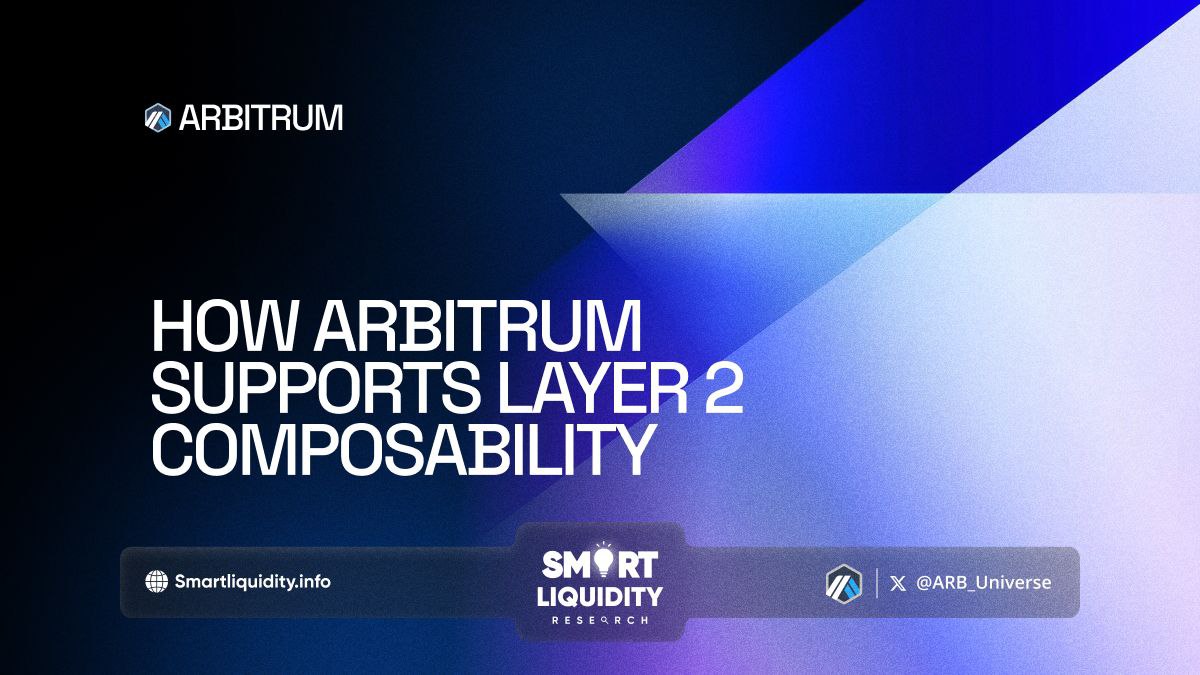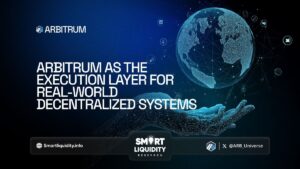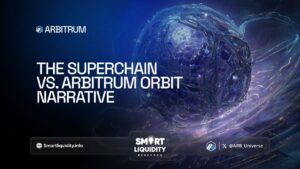How Arbitrum Supports Layer 2 Composability


How Arbitrum Supports Layer 2 Composability! Arbitrum, a leading Layer 2 solution for Ethereum, has been at the forefront of blockchain scaling by improving composability in decentralized applications (dApps) and protocols.
As the demand for scalable and efficient blockchain solutions grows, Layer 2 networks like Arbitrum play a critical role in enhancing the ecosystem’s capacity without compromising decentralization or security.
What is Layer 2 Composability?
Composability refers to the ability of various dApps and protocols to interact and integrate seamlessly with one another, enhancing the potential for innovation and the creation of complex financial systems. In a decentralized environment, composability enables smart contracts to interact across platforms, resulting in a more interconnected and efficient ecosystem. Arbitrum’s Layer 2 architecture ensures that these interactions occur with minimal latency and at lower costs.
Arbitrum’s Optimistic Rollups: The Foundation of Its Success
Arbitrum utilizes Optimistic Rollups, a technology that bundles transactions off-chain while ensuring their security and validity on Ethereum. This approach reduces the workload on Ethereum’s mainnet, lowering gas fees and increasing throughput. The reduced transaction costs and faster settlement times create a fertile environment for dApps to thrive and interoperate with one another.
Optimistic Rollups provide developers the flexibility they need to build complex financial systems with a high level of composability. On Arbitrum, decentralized finance (DeFi) protocols can interact without the burdensome costs and delays often experienced on Layer 1, enabling more sophisticated products such as lending protocols, synthetic assets, and automated market makers (AMMs).
Interoperability Across dApps
The promise of Arbitrum lies in its ability to make the user experience seamless across different applications. By providing high-speed and low-cost transactions, Arbitrum enables dApps to integrate and work together without friction. Developers can easily build on Arbitrum, benefiting from Ethereum’s security while leveraging the enhanced scalability offered by this Layer 2 solution.
For example, a DeFi user on Arbitrum could interact with multiple decentralized protocols, such as Aave for lending and Uniswap for trading, in a single transaction flow. The reduced cost and increased transaction speed improve liquidity and operational efficiency in the ecosystem, making cross-protocol activities easier and more cost-effective.
Lower Fees, Greater Flexibility
Transaction fees on Layer 1 Ethereum often hinder seamless interactions between protocols. High gas fees make composability less practical, especially for complex operations that require multiple contract interactions. Arbitrum solves this issue by offering significantly lower transaction costs, enabling projects to build more intricate systems that rely on continuous and frequent smart contract interactions.
Boosting DeFi Innovation
Arbitrum’s Layer 2 composability has already spurred a new wave of DeFi innovation. Projects can now build interconnected financial systems that offer users more efficient ways to engage in activities such as yield farming, staking, and liquidity provision. These interconnected services help users move assets between protocols with fewer barriers, driving capital efficiency and creating new earning opportunities.
Additionally, by fostering interoperability, Arbitrum unlocks the potential for new financial primitives that combine multiple protocols and strategies. Whether it’s automated yield farming or liquidity pools that operate across multiple platforms, the scope for innovation is limitless.
In Summary
Arbitrum’s support for Layer 2 composability has made it a pivotal player in Ethereum’s scaling landscape. Its efficient infrastructure enables dApps to interact seamlessly, lowering costs and speeding up transactions without compromising on security. As a result, it fosters an environment where DeFi protocols and dApps can innovate at a rapid pace, pushing the boundaries of what is possible in the decentralized economy.
As composability becomes a cornerstone for blockchain scalability, Arbitrum’s role in empowering developers and users alike will continue to grow, ensuring the Ethereum ecosystem remains at the cutting edge of decentralized finance and Web3 innovation.




